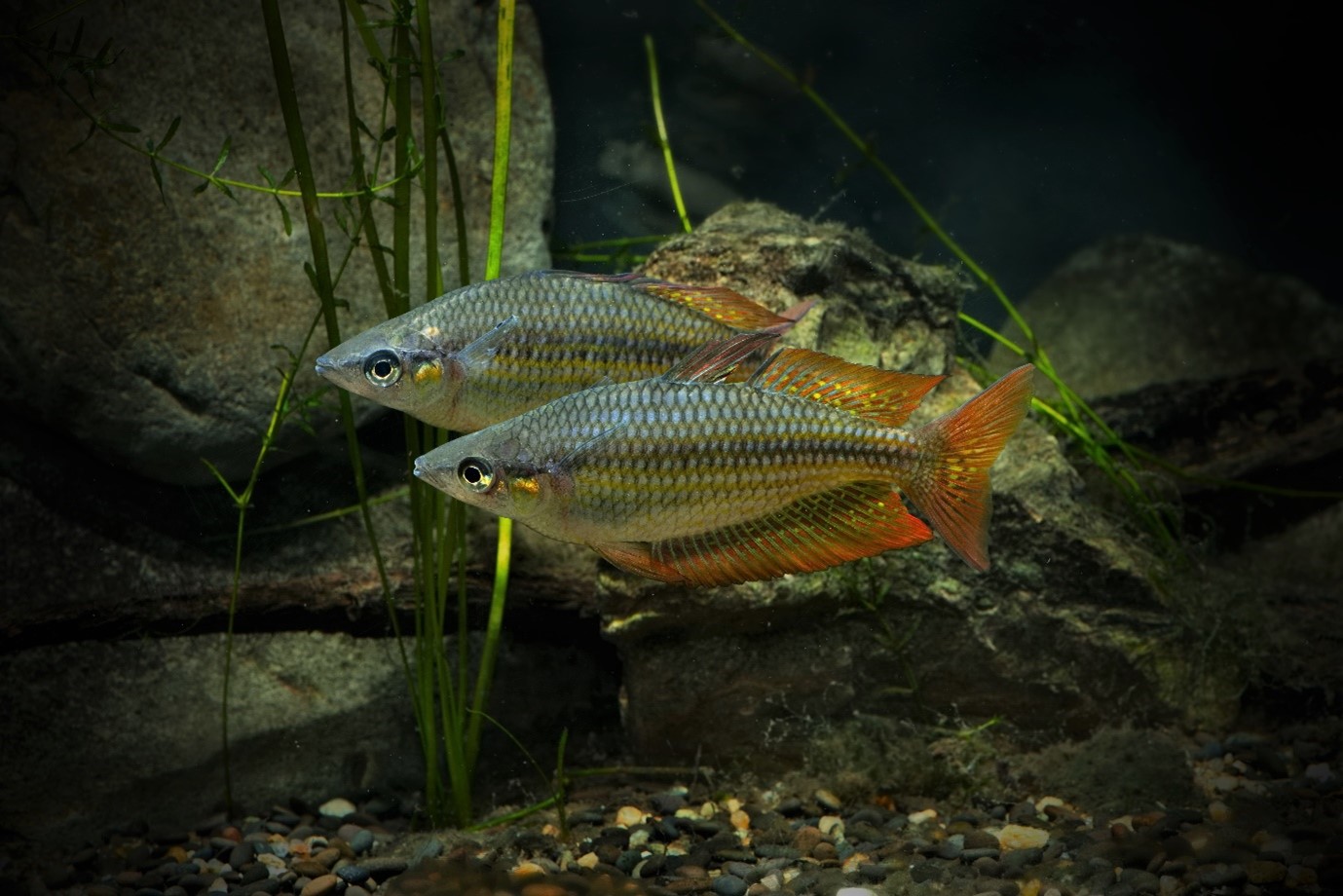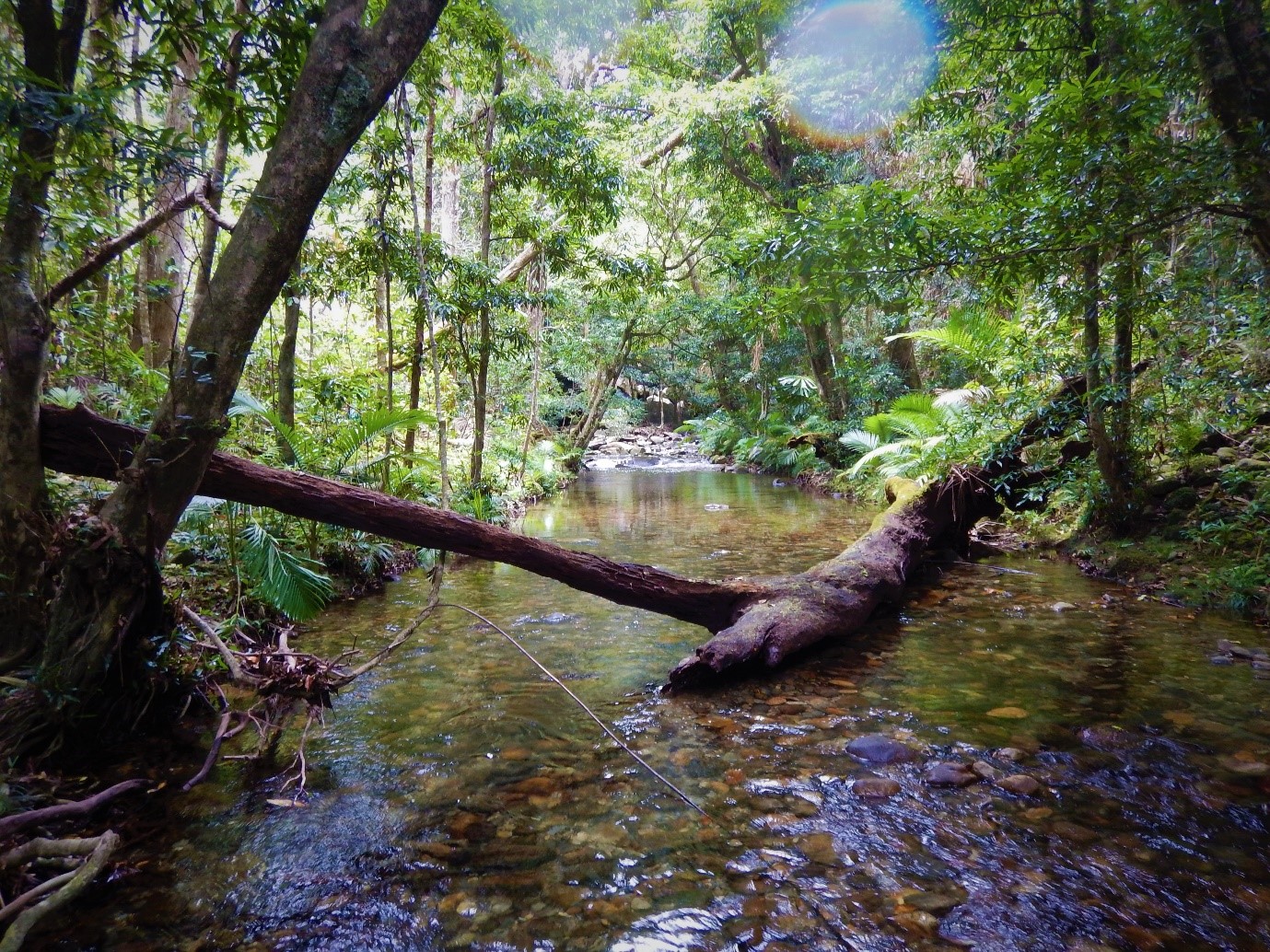
The future of freshwater fish species in Australia’s tropical rainforest areas, including the Daintree and Mosman Gorge, will increasingly be subject to the vagaries of climatic and other changes.
Flinders University molecular ecology researchers have led an in-depth study of the colourful eastern rainbowfish for clues about how their populations have adapted to local conditions in the creeks and rivers of the wet tropical areas of Far North Queensland.
Their study, published in the Nature journal , provides insights into what drives genetic diversity in Australian eastern rainbowfish (Melanotaenia splendida splendida) – highlighting the ways their biodiversity may be affected, and conserved, particularly with any increase in climate change rates.
“Tropical rainforests are home to a staggering variety of plants and animals, ranking them among Earth’s greatest biodiversity hotspots,” says postdoctoral research fellow Dr Katie Gates, first author on the new paper.
“We need to understand this diversity to prepare for any acceleration in habitat change under climate change and other forces.”
Biologists from the Flinders University , University of Canberra and Canada’s Université Laval used a combination of genetics and morphology (the study of physical shape) to investigate how different environmental factors might influence variations among wild populations of these fish.

“We found that, while limited connectivity among different river catchments could explain some of the genetic differences, environmental factors like water flow and temperature offered a better explanation for the patterns overall,” says Dr Gates.
The eastern rainbowfish, which is naturally abundant in tropical Queensland, is known for its striking variety of colours and forms, contributing to its popularity with aquarium keepers as well as scientists.
The study showed that hydrological and thermal variables were important environmental predictors of both genetic and morphological variation.
Project coordinator, Flinders University , says an interesting aspect of this variation was related to fin position, which is known to be heritable in other rainbowfish species and varies among populations living in different streamflow environments.
“These patterns suggest that populations in different parts of the Wet Tropics may have adapted to their local environments in unique ways,” he says.
“Unfortunately, this also indicates that future changes in water flow and temperature due to climate change could have a big impact on the fitness and diversity of tropical rainforest fishes.”
Overall, the study demonstrates the complex interplay between genetics, morphology and ecology in shaping the diversity of a tropical rainforest species.
By understanding how these factors interact, we can develop more effective conservation strategies that take into account the unique challenges facing these biodiverse ecosystems.
The article, (2023) by Katie Gates, Jonathan Sandoval-Castillo, Chris J Brauer, Peter J Unmack (University of Canberra), Martin Laporte and Louis Bernatchez (Université Laval, Québec) and Luciano B Beheregaray has been published in Heredity (Nature) DOI: 10.1038/s41437-023-00612-x
Acknowledgements: Financial support was provided by the Australian Research Council (DP150102903 and FT130101068 to LBB), the Royal Society of South Australia for the Advancement of Science, and the Flinders University Student Association Development Grant. KG was supported by the AJ & IM Naylon PhD Scholarship via Flinders University, and the Playford Trust/Thyne Reid Foundation PhD Scholarship.






